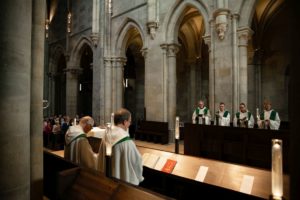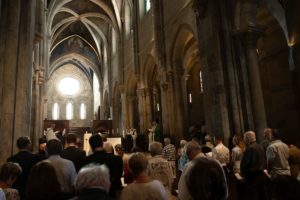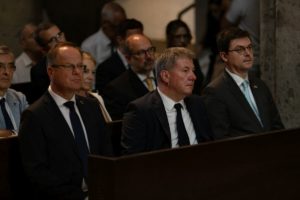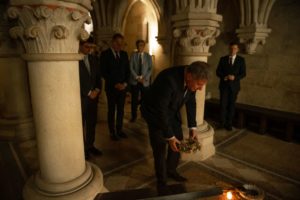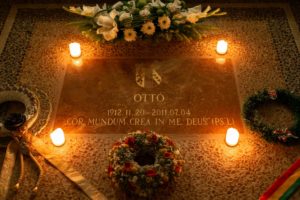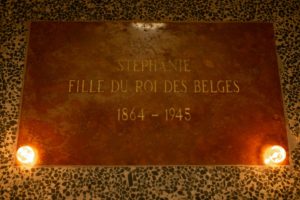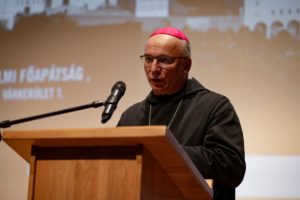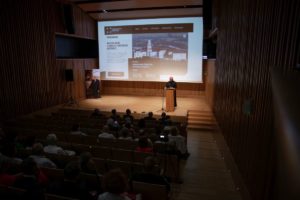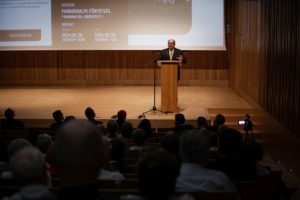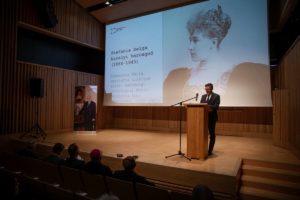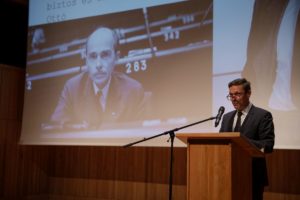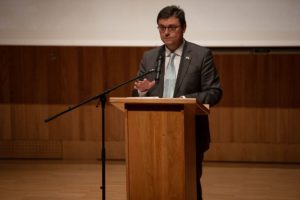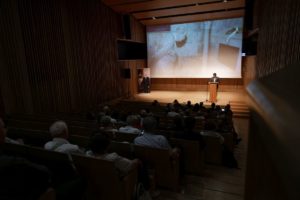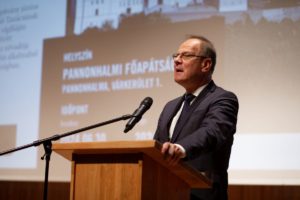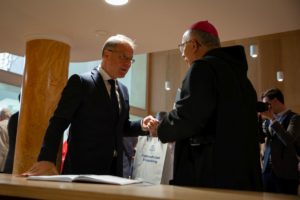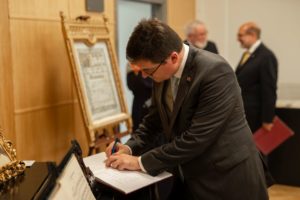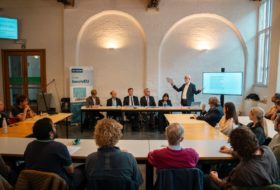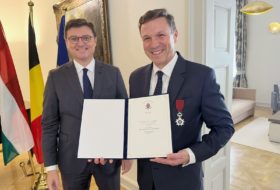The sacred site of the Benedictine monastery on the Hill of St. Martin has been standing for a thousand years. Its monks led a devout and diligent life based on the Rule of the patron saint of Europe for centuries, and their spiritual and educational contribution to Hungarian history is well known. They were also the teachers of our namesake in exile. There is no better symbol of Otto von Habsburg’s attachment to the Order than his heart urn kept in the Basilica. Moreover, the remains of the Prince and Princess of Lónyay were laid to rest there as well. The wife of Elemér Lónyay was the ill-fated Crown Prince Rudolf’s widow, a descendant of the Belgian royal family. This ties us to the present: on 1 July, Hungary took over the Presidency of the Council of the European Union from Belgium. In light of the above, we could not have found a more appropriate venue to express our gratitude for the freedom and prosperity of the continent and to appeal to the Most High for help for the future—the words of Gergely Prőhle, Director of the Otto von Habsburg Foundation, set the tone for the event.
In his welcome speech, Archabbot Cirill T. Hortobágyi reminded the audience that the European Community was founded on former enemies’ mutually recognised economic interests. In our age, however, in a world that has become fragile and vulnerable, financial support has become insufficient. We can only build on the wealth of spiritual life, which alone can create peace within and around us. The legacy of Otto von Habsburg is honoured best by those who strive for peace, —the Archabbot cautioned.
Our namesake was defined by his humanity, sense of duty and unwavering faith in his truth, —lauded his former colleague, Stefan Baier. The politician’s biographer recalled that in keeping with the dynasty’s tradition, Charles I (IV) ’s son envisioned a diverse, tolerant and orderly empire and extended this concept to the whole continent, imagining a legal and defensive area that would work ceaselessly to achieve peace (hence the title of his 1995 book Friedensmacht Europa). His commitment to service, with responsibility and humility, is reminiscent of medieval kingship, yet it is not an anachronism, Baier argued, as his vision has proved a safeguard against totalitarian regimes in the 20th century.
Gergely Fejérdy, Deputy Director for Scientific Affairs of our Foundation, conveyed to the audience the details of Princess Stéphanie’s life in relation to Hungary. He mentioned the excellent relationship between the daughter of King Leopold II of Belgium and the family of Otto von Habsburg. He detailed the crucial role she played in Belgian-Hungarian relations and its positive consequences up to the present day. Jeroen Vergeylen, the Ambassador of the Kingdom of Belgium in Hungary, followed a similar theme in his speech when he referred to the values shared in the political arena on behalf of his country, which is stepping down from the presidency of the Council. He provided a series of historical examples to illustrate the links between the two countries since the early modern period, which became particularly intense in the 20th century: after the world wars, thousands of Hungarian children were taken in by Belgium for longer or shorter periods, and the assistance to refugees of the 1956 Revolution became a new benchmark in that process.
According to the ambassador, their presidency was based on the proverbial Belgian willingness to compromise, which originated in the balancing policy of the Habsburg regime. Jeroen Vergeylen awaits the continuation of this approach from his Hungarian counterparts in the second half of 2024: to seek ways of agreement on competitiveness, the Green Deal, issues of defence and the economy, the war in Ukraine, enlargement and internal institutional reforms. In the Benedictine Archabbey, the diplomat concluded that there is no empty phrase to remind Europe’s leaders of the responsibilities and values of Saint Martin, Saint Benedict, and Otto von Habsburg.
Otto von Habsburg was a European federalist who firmly believed in European cooperation. The content of this statement, which initially seemed self-evident, was elaborated by Tibor Navracsics, Minister of Public Administration and Regional Development. A genuine integration can only be reached through working together based on mutual bipartism, where the participants strive for a shared goal for the common good sought by all. Europeanism preceded the national narratives. Therefore, authentic national and European ideas cannot oppose each other—instead, they presuppose, complement and enrich each other. A voluntary association of nations—a federation—is born from the cooperation of equal partners. And if the members do not lose sight of subsidiarity, it protects them from the harmful effects of hierarchy. The ‘legacy’ of an ethnically neutral framework of cooperation in a multi-ethnic empire could thus become a model of unification for Otto von Habsburg—and a lesson and a warning for present and future generations.
Photos by Zoltán Szabó

